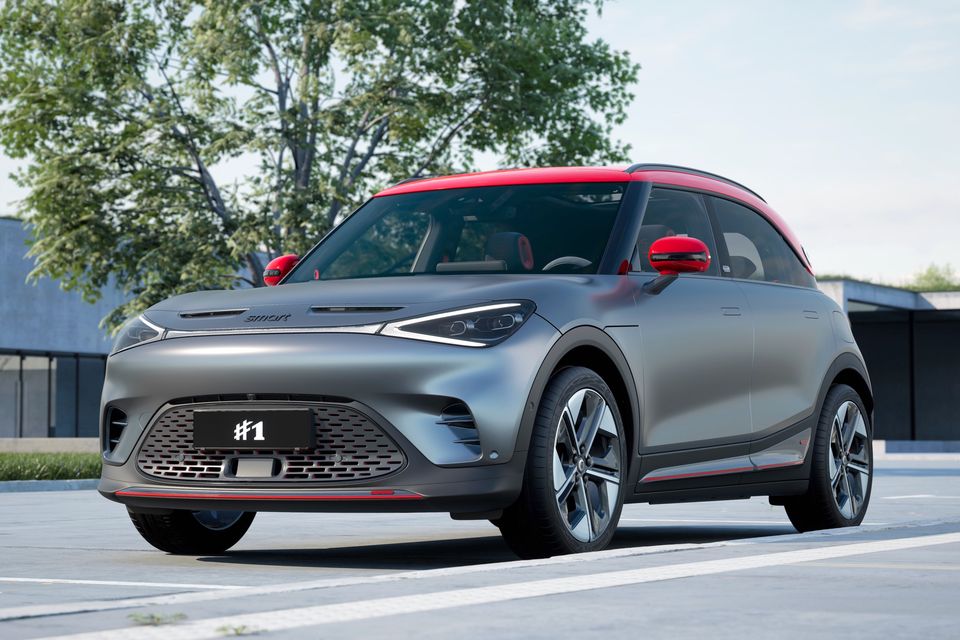
I know a specific question from readers most likely awaits me near the end of this review of the Smart#1 Brabus, but we’ll get to it. The Brabus name is synonymous with performance. It is highly regarded for its specialist tuning and individual modifications of mostly Mercedes models.
And since Mercedes plays a key role, alongside Chinese giant Geely, in the new “smart car” electric re-launch, it looks like it should be a proper fit. In the case of the Smart #1 Brabus, the emphasis is on substantial power and sporty driving for the mid-sized SUV. I have driven “ordinary” smarts since the brand was rolled out here, but this is the first of these more powerful and quicker models to come my way.
Putting such a live-wire version on the market, I assume, is due simply to the fact that they can. Smart must feel there is a market for up-spec vehicles like this to create a halo effect in a segment where non-Brabus smart-car rivals include the likes of the MG4 EV/ZS, Volvo EX30, Kia Niro EV, BYD Atto and Jeep Avenger. The thing is that Smart cars are pitched further upmarket – certainly the prices are.
The standard Smart #1 has a single 272hp electric motor on the rear axle. And that is a lot of power for a car of this size. But with the Brabus, the brand has put another motor on to drive the front wheels, effectively making it all-wheel-drive.
That second motor lifts its power to a whopping 428hp. That is why the Brabus buzzes. It can eat up the road with zero to 100kmh in 3.
9 seconds in special drive mode. We are talking Porsche Carrera GT at that sort of zip. Both standard and Brabus versions work off the same 66kWh battery pack, with the more powerful one understandably consuming energy more quickly.
It claims the single-motor version will eke out enough power to get you 440km on one charge. Let’s be generous and say 400km in real-time. The Brabus model can squeeze 400km due to its extra electric motor.
But you would really be thinking 350/360km. Whoever is thinking of buying this is going to feel the need to replenish far sooner than that if they are driving it with even moderate propulsion. After all, what is the point in having one if you are not going to give it (legally) a chance to stretch its legs? The good news is that either version is capable of taking as little as 27 minutes to charge from 10pc to 80pc because they both have 150kW DC rapid charging capability.
You can fill from empty on a home charger in around three-and-a-half hours. The car’s exterior design doesn’t really appeal to me. Just a subjective judgment.
There are curves and lines and a “floating” roof and I’m sure younger generations of potential buyers will revel in its extensively worked looks. Inside was more to my liking, with good-quality surfaces and instrumentation giving the feel of being in something at the upper end of the market. I also found there was particularly good room at the back of what is a comfortable cabin.
There is a 9.2ins digital instrument panel and a 12.8ins touchscreen infotainment screen – both are well placed, clear and data was easy to access.
Getting the best driving position was a matter of only a few seconds, it was quick and easy and my seat included adaptable lumbar support. All set for the drive then. There was no denying its wish to perform.
It really was wasted in city driving where it reminded me of a dog straining on the leash. Out where it could “stretch is legs” it spent no time dawdling and I had to adapt/reduce my driving to surging from 60kmh to near the specific limit to get a sense of its huge power. That demonstrated two things as far as I was concerned.
One was that not only does it have snap-quick raw power (noise intrusion was not an issue) but it had exceptional, seamless pulling power (torque). It just flew from 60kmh to 100kmh/120kmh, for example, where you’d expect a diesel or petrol engine to take a wee while to gather themselves. Instantly available with all its power is the hallmark of all EVs.
It’s one of the real upsides of electric energy. The second point forces me to say something I thought I would never utter about a new car. I found it too powerful for its size and for Irish roads.
To get enjoyment and find real drive, take it to a track. Which brings me to the question I suspected you might ask: why would anyone buy it? I can make the case for it by pointing to its power, its spec and its cabin all making it a different sort of proposition. But it is costly; €54,170 is a lot albeit it is premium-oriented.
And it is overpowered. It will have its followers, no doubt, but I won’t be among them. Factfile: Smart #1 Brabus:.














